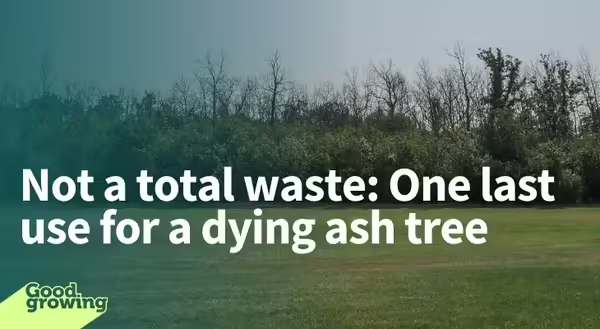
Working for Illinois Extension I get to travel quite often, mostly throughout west-central Illinois. And 2021 has brought a significant decline in ash trees in this area.
The Story of EAB
Emerald ash borer (EAB) is a non-native insect that attacks healthy ash trees. EAB is nothing new. I have written about this insect before, mainly when it was first discovered in the area around four years ago. Yet at that time, the effects of EAB had not yet been felt. Today it is obvious how they have ravaged the landscape.
You likely have seen the telltale signs of EAB. Ash trees usually die starting at the top where the insect begins feeding. In a desperate attempt to remain alive the tree activates latent buds along the trunk and weakly attached water sprouts emerge giving the interior of the tree a bushy appearance. Over a few years, EAB will move downward feasting on plant tissue underneath the bark until the ash tree is dead.
Where I live in Macomb dying ash trees line many streets and shade homes and yards. Yet, I see the same thing happening in Jacksonville, Quincy, Stronghurst, across the river in Burlington, Iowa, and all the small communities in between.
There are several different species of ash tree, but in the landscape industry often only two species were planted – green ash and white ash. Almost without fail, EAB will attack green ash first, and those are the species I am currently seeing struggling to stay alive. For most, if you have not been treating the tree, it is too late for green ash. Once EAB finishes off green ash, it moves on to white ash. For some, their white ash are still in pretty good shape. But if you do not treat the tree with a systemic insecticide it’s only a matter of time until EAB finds it.
In the coming year, tree crews will be busy mostly doing ash tree removal. And many homeowners are going to be paying thousands of dollars to get these dead ash trees cut down. It is uncommon for funding resources to help homeowners with the cost of cutting down an ash tree but check with your local municipality if they have any special programs. With all that money spent, and a gaping hole where a massive tree once stood, it may seem a complete waste.
One last contribution of the noble ash - woodchips
There is one final use of an ash tree struck down by EAB, and that is to have the tree chipped up to use those very woodchips as mulch in your landscape. Will using ash tree woodchips spread EAB? Well, EAB is pretty much already everywhere in this part of the state, so that is not much of a concern, especially if you recycle the tree back into your yard. Plus, most wood chippers chop up the material small enough (less than 2-inch diameter) that EAB cannot survive on that small of a surface.
Woodchips are an underutilized resource. Often free or available for a small fee, woodchips provide much of the same benefits as other types of mulch. Woodchips do have a coarser texture than shredded cypress mulch, but the woodchip size and shape are also a benefit. Woodchips do not mat down and create a “shell” like most shredded wood mulches. This allows more air and water to pass through woodchips and is beneficial to soil health.
Curious if woodchips would look good in landscape beds? Stop by the McDonough County Extension office where we demonstrate many different types of mulch. You will find woodchips as a mulch layer in some vegetable garden beds and landscape beds.
And if you're getting an ash tree cut down and don’t want the chipped up tree parts, give me a call, I’ll take them!
Good Growing Tip of the Week: The only way to protect a tree from EAB is to treat it with a systemic herbicide. For many ash trees, treatment will be too late if 20% of the canopy has already died as typically up to 50% of the tree has been infested with EAB.
Learn more about Illinois invasive species.
Want to get notified when new Good Growing posts are available? SIGN ME UP!
Meet the Author
Chris Enroth is a horticulture educator with University of Illinois Extension, serving Henderson, McDonough, Knox, and Warren counties since 2012. Chris provides horticulture programming with an emphasis on the home gardener, landscape maintenance personnel, and commercial landscapers.
Additional responsibilities include coordinating local county Master Gardener and Master Naturalist volunteers - providing their training, continuing education, advanced training, seasonal events, and organizing community outreach programs for horticulture and conservation assistance/education.
In his spare time, Chris enjoys the outdoors, lounging in the garden among the flowers (weeds to most).